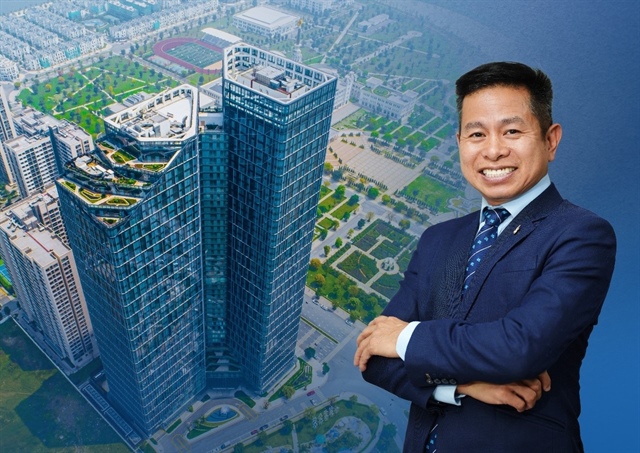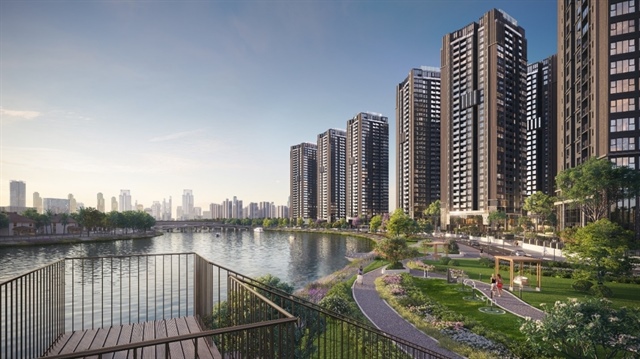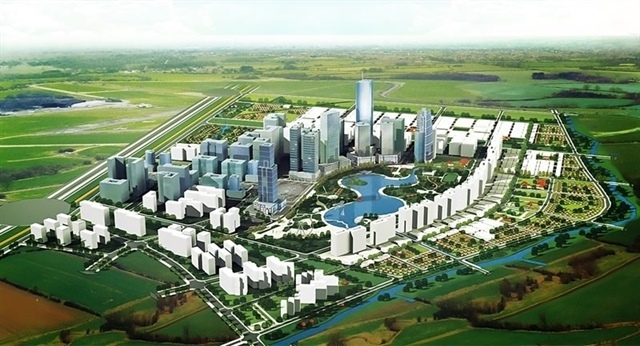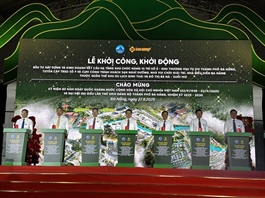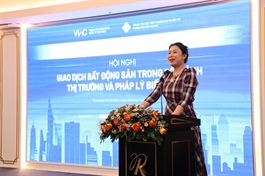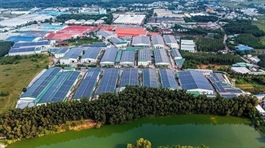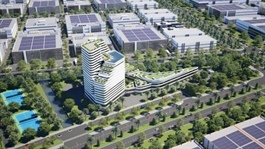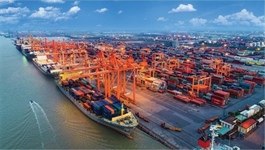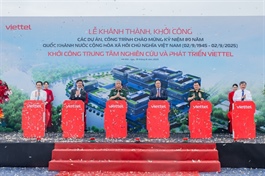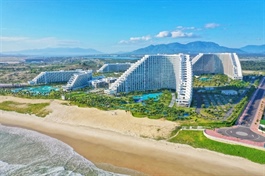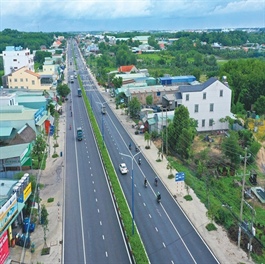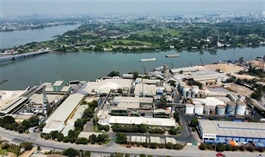Affordable housing emerges as driver of Vietnam’s urban growth
Affordable housing emerges as driver of Vietnam’s urban growth
As Vietnam's urban population grows, affordable housing is emerging as a key driver of sustainable development, according to Dr. Jerry Nguyen, deputy general director of Investment and International Business Development at Hoa Binh Construction Group.
|
Affordable housingpriced at $570–$1,710 per square metre addresses the needs of young workers, skilled labourers, office staff, and middle-income families earning $380–$1,330 per month, while also boosting labour productivity, stabilising the real estate market, and fostering inclusive urban communities.
Yet, with only 100,000 units completed against a 1.2 million-unit demand by 2030, a 20-30 per cent land price surge looming in 2026, and 70 per cent of industrial workers in substandard rentals, Vietnam faces a historic challenge. Solutions lie in five advanced planning models, a National Affordable Housing Fund, and bold reforms to make homeownership a reality for millions.
The supply-demand gap: a critical urban challenge
As of August, Vietnam's housing market faced a severe shortage, with only 100,000 affordable housing units completed against a 1.2 million-unit demand by 2030. Supply is limited: of over 500 projects, 150 (130,000 units) are delayed by land clearance, and 300 (320,000 units) await approval due to the 2024 Land Law and 2023 Housing Law updates. This stalls urban growth, with 70 per cent of industrial workers in temporary rentals, lowering productivity and raising social costs.
A clear distinction must be made between social housing and affordable housing, both vital components of Vietnam's housing strategy. Social housing, government-led and targeting low-income earners at $380-$570 per sq.m, benefits from public land and incentives but is hindered by lengthy income verification (3-6 months) and resale restrictions (5-10 years).
In contrast, affordable housing offers flexibility, unrestricted transfers, and modern amenities like parks and shopping centres, with private developers meeting 60 per cent of market demand through market-driven financing. Streamlining social housing income verification to 1-2 months and easing resale conditions could enhance synergy between the two segments, enabling the government to optimise resources and achieve broader social welfare goals.
Pioneering projects showcase affordable housing potential: Ehome Southgate (Long An, Nam Long Group, $41,723/unit), Vinhomes Happy Home (Ho Chi Minh City, Vinhomes, $760-$950/sq.m), VSIP projects (Binh Duong, VSIP Group & Becamex IDC, $685-$950/sq.m), Legacy Prime (Binh Duong, Kim Oanh Group, $34,130/unit), Ecohome (Hanoi, Capital House, $760-$1,139/m²), and Viglacera Housing (Bac Ninh, $570-$950/sq.m). These enable homeownership for thousands, with amenities supporting Vietnam's workforce and economic growth.
A 20-30 per cent urban land price hike from January 2026 (Decree No.71/2024/ND-CP) requires government-private sector partnerships (PPP) to ensure affordability, curb inequality, and align with sustainable urbanisation goals.
Satellite cities: expanding living spaces through infrastructure synergy
The 2025 provincial mergers integrate Binh Duong, Dong Nai, and Ba Ria-Vung Tau into Ho Chi Minh City, and Bac Ninh into Hanoi, enabling satellite urban development. Ho Chi Minh City (13-15 million residents) will need 1.5-2 million affordable units by 2030; Hanoi (8-10 million) requires 800,000-1 million. This offers the government a chance to transform peri-urban areas into economic hubs, easing city core pressure and boosting regional growth.
Can Gio's 2,870-hectare reclamation project blends affordable housing, tourism, and a seaport, linked by the Can Gio Bridge (2028) and Ring Road 3 (2026). Binh Duong's VSIP III and New Binh Duong City (1,000 ha each) integrate housing, industry, and services, connected via the My Phuoc-Tan Van Expressway and planned Di An-Thu Dau Mot metro (2030).
Danang's 1,200-ha Hoa Khanh-Lien Chieu free economic zone offers units at $760-$1,139//sq.m with industrial and port facilities. In the north, Yen Phong (Bac Ninh, 1,500 ha) and Viet Yen (Bac Giang, 800 ha) support Samsung's workforce, linked by Hanoi-Lang Son Expressway and Ring Road 4 (2025).
Global lessons and advanced planning models
Global benchmarks show affordable housing as strategic infrastructure requires modern planning, transparent governance, and advanced technology. Singapore's Toa Payoh offers units at equivalent prices near MRT stations, with 2.6 per cent loans (repayments under 20 per cent of income), achieving 90 per cent homeownership.
South Korea's Gangnam uses PPPs with 1.2 per cent loans and metro integration. Japan's Tama-Plaza employs modular construction, cutting costs by 20 per cent and timelines by 40 per cent. China's Longhua (Shenzhen) uses 3D concrete printing for rapid, low-cost builds.
Vietnam can adopt five models:
- Transit-Oriented Development (TOD): Housing near transit like Metro Line 1 (operational Deccember 2024) and Line 2, with amenities within a 10-15 minute walk. Thu Duc units sell at $760-$1,1389/sq.m, but metro acceleration and PPPs are needed to counter land price rises ($3,797-$5,695/sq.m).
- Zone-Oriented Development (ZOD): Housing near industrial zones like VSIP III (Binh Duong) and Yen Phong (Bac Ninh), with amenities within 2-3 km, inspired by Gangnam.
- Node-Oriented Development (NOD): Urban hubs at Thu Thiem, Long Thanh, and Dong Anh, using modular tech like Tama-Plaza.
- Land Value Capture (LVC): Reinvests infrastructure-driven land value increases, as Singapore does with 70 per cent. Thu Duc's 20-30 per cent land price rise over three years calls for transparent frameworks.
- Rural-Urban Linkage Development (RULD): Affordable clusters in peri-urban Long An and Vinh Phuc, linked by highways, inspired by Longhua's 3D printing.
These models position Vietnam to make affordable housing a foundation for sustainable urban growth.
Comprehensive solutions
Affordable housing meets 60 per cent of genuine demand. To counter the 2026 land price surge, three solutions are key:
- Land provision: Offer clean land via PPPs without auctions or 30-50 year leases for TOD/ZOD/NOD/LVC projects.
- National fund: Establish a $1.89 billion fund from green bonds (3-3.5 per cent), JICA/ADB ODA (0-1 per cent), and property taxes.
- Transparency: Use blockchain for land inventories, with 5-10 per cent penalties for delays over two years.
Developer incentives: Offer 10-year tax exemptions, 50 per cent VAT cuts on green materials, 50 per cent subsidies for LOTUS/EDGE tech, 4-5 per cent loans (versus 8-10 per cent market rates), and fast-tracked permits for BIM, modularisation, and 3D printing, reduced costs by 20-30 per cent and timelines by 40 per cent.
Buyer support: Provide 3-4 per cent loans with repayments under 30 per cent of income ($75.92-$379.58 monthly), transparent project info via YouTube, TikTok, and blockchain, and bank approvals within 15 days.
Policy reforms and roadmap
The government can drive reforms: Prioritise $570-$1,708/sq.m projects with 3-6 month approvals; accelerate metro, Bien Hoa-Vung Tau Expressway, and ring roads; optimise LVC with 70 per cent reinvestment; promote PPPs with 2-3 per cent loans and 20-year land tax waivers; allocate 20-30 per cent of public land in Thu Duc, Can Gio, and Long Thanh; and launch a “Secure Home, Prosperous Life” campaign.
2025-2027: Establish legal frameworks, the fund, and 10-15 TOD/ZOD/NOD/LVC areas in Dong Anh, Thu Duc, Long Thanh, Can Gio, Yen Phong, and Danang Free Trade Zone.
2028-2030: Complete 300,000 units (30 per cent of demand) in Binh Duong, Long Thanh, Bac Ninh, and Da Nang, with smart city integrations.
On August 19, Vingroup launched six mega-projects worth $6.3 billion, including Bac Ninh's 277-ha urban area ($1.6 billion, NOD/RULD), Ha Tinh's 964-ha Vinhomes Vung Ang ($504.8 million, ZOD), Tay Ninh's 1,090-ha Phuoc Vinh Tay ($3.4 billion, TOD/RULD), the 124 km Gia Nghia-Chon Thanh Expressway ($759.2 million, PPP), Hanoi's 900,000-sq.m Exhibition Centre (NOD), and Haiphong's 2.2 km May Chai Bridge (TOD). Aligned with resolutions No.66 and 68, these projects bolster sustainable housing and infrastructure.
Affordable housing is a strategic enabler for productivity, stability, and equity. By integrating TOD, ZOD, NOD, LVC, and RULD with robust policies, Vietnam can build resilient, multi-centred cities. With government leadership and private sector innovation, homeownership can become a reality, positioning Vietnam as a prosperous, equitable nation.
- 08:00 03/09/2025


